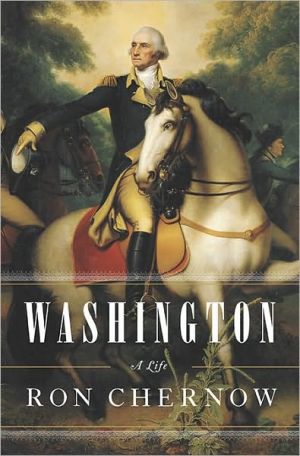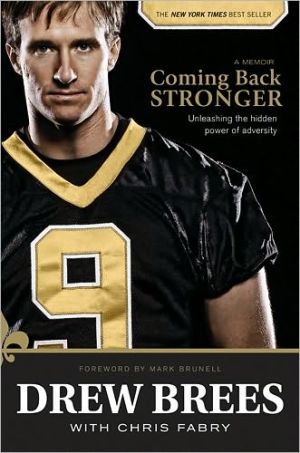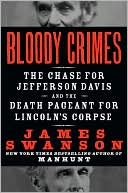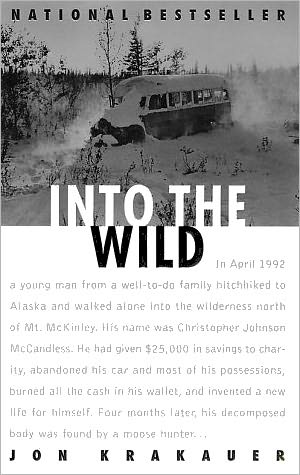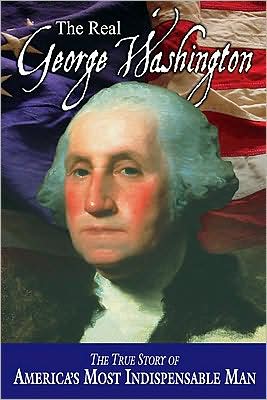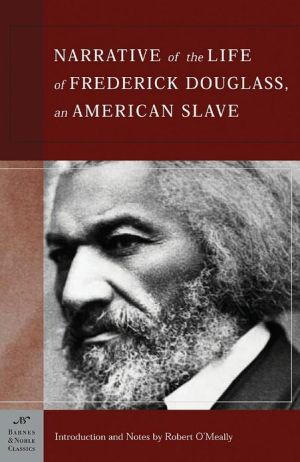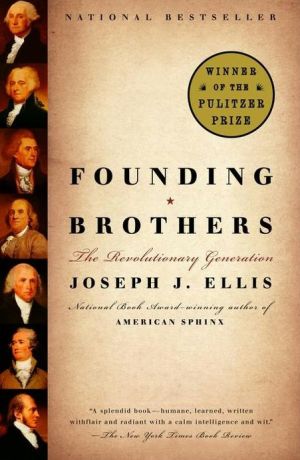Washington: A Life
Watch a Video \ \ Watch a video\ \ Read "Surprising Facts About George Washington" from Washington: A Life by Ron Chernow\ From Pulitzer-prize winner Ron Chernow, a landmark biography of George Washington.\ In Washington: A Life celebrated biographer Ron Chernow provides a richly nuanced portrait of the father of our nation. With a breadth and depth matched by no other one-volume life of Washington, this crisply paced narrative carries the reader through his troubled boyhood, his precocious...
Search in google:
From National Book Award winner Ron Chernow, a landmark biography of George Washington In Washington: A Life celebrated biographer Ron Chernow provides a richly nuanced portrait of the father of our nation. With a breadth and depth matched by no other one-volume life of Washington, this crisply paced narrative carries the reader through his troubled boyhood, his precocious feats in the French and Indian War, his creation of Mount Vernon, his heroic exploits with the Continental Army, his presiding over the Constitutional Convention, and his magnificent performance as America's first president. Despite the reverence his name inspires, Washington remains a lifeless waxwork for many Americans, worthy but dull. A laconic man of granite self-control, he often arouses more respect than affection. In this groundbreaking work, based on massive research, Chernow dashes forever the stereotype of a stolid, unemotional man. A strapping six feet, Washington was a celebrated horseman, elegant dancer, and tireless hunter, with a fiercely guarded emotional life. Chernow brings to vivid life a dashing, passionate man of fiery opinions and many moods. Probing his private life, he explores his fraught relationship with his crusty mother, his youthful infatuation with the married Sally Fairfax, and his often conflicted feelings toward his adopted children and grandchildren. He also provides a lavishly detailed portrait of his marriage to Martha and his complex behavior as a slave master. At the same time, Washington is an astute and surprising portrait of a canny political genius who knew how to inspire people. Not only did Washington gather around himself the foremost figures of the age, including James Madison, Alexander Hamilton, John Adams, and Thomas Jefferson, but he also brilliantly orchestrated their actions to shape the new federal government, define the separation of powers, and establish the office of the presidency. In this unique biography, Ron Chernow takes us on a page-turning journey through all the formative events of America's founding. With a dramatic sweep worthy of its giant subject, Washington is a magisterial work from one of our most elegant storytellers. The Barnes & Noble Review Chernow's narrative is so rich, its scale so massive and epic, that what is new fits seamlessly into the wider picture. The final impression a reader will take away -- his or her lasting image of Washington -- will be profound and dynamic. Chernow has gone into Washington's world, almost into his mind, and inhabited it. Under his gaze, from the very first page, that world begins to speak and stir, and great Washington steps before us, as if on an enormous stage, distant but clear, breathing. If I have not said so already, this is far and away the best life of George Washington ever written.
Read "Surprising Facts About George Washington" from Washington: A Life by Ron Chernow\ Prelude The Portrait Artist\ In March 1793 Gilbert Stuart crossed the North Atlantic for the express purpose of painting President George Washington, the supreme prize of the age for any ambitious portrait artist. Though born in Rhode Island and reared in Newport, Stuart had escaped to the cosmopolitan charms of London during the war and spent eighteen years producing portraits of British and Irish grandees. Overly fond of liquor, prodigal in his spending habits, and with a giant brood of children to support, Stuart had landed in the Marshalsea Prison in Dublin, most likely for debt, just as Washington was being sworn in as first president of the United States in 1789.\ For the impulsive, unreliable Stuart, who left a trail of incomplete paintings and irate clients in his wake, George Washington emerged as the savior who would rescue him from insistent creditors. "When I can net a sum sufficient to take me to America, I shall be off to my native soil," he confided eagerly to a friend. "There I expect to make a fortune by Washington alone. I calculate upon making a plurality of his portraits… and if I should be fortunate, I will repay my English and Irish creditors." In a self-portrait daubed years earlier, Stuart presented himself as a restless soul, with tousled reddish-brown hair, keen blue eyes, a strongly marked nose, and a pugnacious chin. This harried, disheveled man was scarcely the sort to appeal to the immaculately formal George Washington.\ Once installed in New York, Stuart mapped out a path to Washington with the thoroughness of a military campaign. He stalked Washington's trusted friend Chief Justice John Jay and rendered a brilliant portrait of him, seated in the full majesty of his judicial robes. Shortly afterward Stuart had in hand the treasured letter of introduction from Jay to President Washington that would unlock the doors of the executive residence in Philadelphia, then the temporary capital.\ As a portraitist, the garrulous Stuart had perfected a technique to penetrate his subjects' defenses. He would disarm them with a steady stream of personal anecdotes and irreverent wit, hoping that this glib patter would coax them into self-revelation. In the taciturn George Washington, a man of granite self-control and a stranger to spontaneity, Gilbert Stuart met his match. From boyhood, Washington had struggled to master and conceal his deep emotions. When the wife of the British ambassador later told him that his face showed pleasure at his forthcoming departure from the presidency, Washington grew indignant: "You are wrong. My countenance never yet betrayed my feelings!" He tried to govern his tongue as much as his face: "With me it has always been a maxim rather to let my designs appear from my works than by my expressions."\ When Washington swept into his first session with Stuart, the artist was awestruck by the tall, commanding president. Predictably, the more Stuart tried to pry open his secretive personality, the tighter the president clamped it shut. Stuart's opening gambit backfired. "Now, sir," Stuart instructed his sitter, "you must let me forget that you are General Washington and that I am Stuart, the painter." To which Washington retorted drily that Mr. Stuart need not forget "who he is or who General Washington is."\ A master at sizing people up, Washington must have cringed at Stuart's facile bonhomie, not to mention his drinking, snuff taking, and ceaseless chatter. With Washington, trust had to be earned slowly, and he balked at instant familiarity with people. Instead of opening up with Stuart, he retreated behind his stolid mask. The scourge of artists, Washington knew how to turn himself into an impenetrable monument long before an obelisk arose in his honor in the nation's capital.\ As Washington sought to maintain his defenses, Stuart made the brilliant decision to capture the subtle interplay between his outward calm and his intense hidden emotions, a tension that defined the man. He spied the extraordinary force of personality lurking behind an extremely restrained facade. The mouth might be compressed, the parchment skin drawn tight over ungainly dentures, but Washington's eyes still blazed from his craggy face. In the enduring image that Stuart captured and that ended up on the one-dollar bill—a magnificent statement of Washington's moral stature and sublime, visionary nature—he also recorded something hard and suspicious in the wary eyes with their penetrating gaze and hooded lids.\ With the swift insight of artistic genius, Stuart grew convinced that Washington was not the placid and composed figure he presented to the world. In the words of a mutual acquaintance, Stuart had insisted that "there are features in [Washington's] face totally different from what he ever observed in that of any other human being; the sockets of the eyes, for instance, are larger than he ever met with before, and the upper part of the nose broader. All his features, [Stuart] observed, were indicative of the strongest and most ungovernable passions, and had he been born in the forests, it was his opinion that [Washington] would have been the fiercest man among the savage tribes." The acquaintance confirmed that Washington's intimates thought him "by nature a man of fierce and irritable disposition, but that, like Socrates, his judgment and great self-command have always made him appear a man of a different cast in the eyes of the world."\ Although many contemporaries were fooled by Washington's aura of cool command, those who knew him best shared Stuart's view of a sensitive, complex figure, full of pent-up passion. "His temper was naturally high-toned [that is, high-strung], but reflection and resolution had obtained a firm and habitual ascendency over it," wrote Thomas Jefferson. "If ever, however, it broke its bonds, he was most tremendous in wrath." John Adams concurred. "He had great self-command… but to preserve so much equanimity as he did required a great capacity. Whenever he lost his temper, as he did sometimes, either love or fear in those about him induced them to conceal his weakness from the world." Gouverneur Morris agreed that Washington had "the tumultuous passions which accompany greatness and frequently tarnish its luster. With them was his first contest, and his first victory was over himself… Yet those who have seen him strongly moved will bear witness that his wrath was terrible. They have seen, boiling in his bosom, passion almost too mighty for man."\ So adept was Washington at masking these turbulent emotions behind his fabled reserve that he ranks as the most famously elusive figure in American history, a remote, enigmatic personage more revered than truly loved. He seems to lack the folksy appeal of an Abraham Lincoln, the robust vigor of a Teddy Roosevelt, or the charming finesse of a Franklin Roosevelt. In fact, George Washington has receded so much in our collective memory that he has become an impossibly stiff and inflexible figure, composed of too much marble to be quite human. How this seemingly dull, phlegmatic man, in a stupendous act of nation building, presided over the victorious Continental Army and forged the office of the presidency is a mystery to most Americans. Something essential about Washington has been lost to posterity, making him seem a worthy but plodding man who somehow stumbled into greatness.\ From a laudable desire to venerate Washington, we have sanded down the rough edges of his personality and made him difficult to grasp. He joined in this conspiracy to make himself unknowable. Where other founders gloried in their displays of intellect, Washington's strategy was the opposite: the less people knew about him, the more he thought he could accomplish. Opacity was his means of enhancing his power and influencing events. Where Franklin, Hamilton, or Adams always sparkled in print or in person, the laconic Washington had no need to flaunt his virtues or fill conversational silences. Instead, he wanted the public to know him as a public man, concerned with the public weal and transcending egotistical needs.\ Washington's lifelong struggle to control his emotions speaks to the issue of how he exercised leadership as a politician, a soldier, a planter, and even a slaveholder. People felt the inner force of his nature, even if they didn't exactly hear it or see it; they sensed his moods without being told. In studying his life, one is struck not only by his colossal temper but by his softer emotions: this man of deep feelings was sensitive to the delicate nuances of relationships and prone to tears as well as temper. He learned how to exploit his bottled-up emotions to exert his will and inspire and motivate people. If he aroused universal admiration, it was often accompanied by a touch of fear and anxiety. His contemporaries admired him not because he was a plaster saint or an empty uniform but because they sensed his unseen power. As the Washington scholar W. W. Abbot noted, "An important element in Washington's leadership both as a military commander and as President was his dignified, even forbidding, demeanor, his aloofness, the distance he consciously set and maintained between himself and nearly all the rest of the world."9\ The goal of the present biography is to create a fresh portrait of Washington that will make him real, credible, and charismatic in the same way that he was perceived by his contemporaries. By gleaning anecdotes and quotes from myriad sources, especially from hundreds of eyewitness accounts, I have tried to make him vivid and immediate, rather than the lifeless waxwork he has become for many Americans, and thereby elucidate the secrets of his uncanny ability to lead a nation. His unerring judgment, sterling character, rectitude, steadfast patriotism, unflagging sense of duty, and civic-mindedness—these exemplary virtues were achieved only by his ability to subdue the underlying volatility of his nature and direct his entire psychological makeup to the single-minded achievement of a noble cause.\ A man capable of constant self-improvement, Washington grew in stature throughout his life. This growth went on subtly, at times imperceptibly, beneath the surface, making Washington the most interior of the founders. His real passions and often fiery opinions were typically confined to private letters rather than public utterances. During the Revolution and his presidency, the public Washington needed to be upbeat and inspirational, whereas the private man was often gloomy, scathing, hot-blooded, and pessimistic.\ For this reason, the new edition of the papers of George Washington, started in 1968 and one of the great ongoing scholarly labors of our time, has provided an extraordinary window into his mind. The indefatigable team of scholars at the University of Virginia has laid a banquet table for Washington biographers and made somewhat outmoded the monumental Washington biographies of the mid-twentieth century: the seven volumes published by Douglas Southall Freeman (1948 – 57) and the four volumes by James T. Flexner (1965 – 72). This book is based on a close reading of the sixty volumes of letters and diaries published so far in the new edition, supplemented by seventeen volumes from the older edition to cover the historical gaps. Never before have we had access to so much material about so many aspects of Washington's public and private lives.\ In recent decades, many fine short biographies of Washington have appeared as well as perceptive studies of particular events, themes, or periods in his life. My intention is to produce a large-scale, one-volume, cradle-to-grave narrative that will be both dramatic and authoritative, encompassing the explosion of research in recent decades that has enriched our understanding of Washington as never before. The upshot, I hope, will be that readers, instead of having a frosty respect for Washington, will experience a visceral appreciation of this foremost American who scaled the highest peak of political greatness.
Author's Note 13\ Prelude: The Portrait Artist 15\ Part 1 The Frontiersman 23\ 1 A Short-Lived Family 25\ 2 Fortune's Favorite 46\ 3 Wilderness Mission 70\ 4 Bloodbath 88\ 5 Shades of Death 110\ 6 The Soul of an Army 129\ 7 A Votary to Love 152\ 8 Darling of a Grateful Country 172\ Part 2 The Planter 183\ 9 The Man of Mode 185\ 10 A Certain Species of Property 206\ 11 The Prodigy 227\ 12 Providence 238\ 13 A World of His Own 254\ 14 The Asiatic Prince 282\ 15 A Shock of Electricity 305\ Part 3 The General 329\ 16 The Glorious Cause 331\ 17 Magnificent Bluff 354\ 18 Land of Freedom 375\ 19 The Heights 402\ 20 All London Afloat 424\ 21 Disaster 442\ 22 An Indecisive Mind 465\ 23 The Crossing 485\ 24 The Busy Scenes of a Camp 513\ 25 Darkness Visible 539\ 26 Rapping a Demigod over the Knuckles 561\ 27 A Dreary Kind of Place 580\ 28 The Long Retreat 605\ 29 Pests of Society 623\ 30 The Storm Thickens 641\ 31 The Traitor 664\ 32 Mutiny 695\ 33 Plundering Scoundrels 712\ 34 The World Turned Upside Down 727\ 35 Man of Moderation 759\ 36 Closing the Drama with Applause 783\ 37 Cincinnatus 801\ Part 4 The Statesman 821\ 38 American Celebrity 823\ 39 Gentleman Farmer 848\ 40 Devil's Bargain 863\ 41 The Ruins of the Past 885\ 42 A Masterly Hand 903\ 43 A House on Fire 923\ 44 Rising Sun 945\ 45 Mounting the Seat 960\ Part 5 The President 985\ 46 The Place of Execution 987\ 47 Acting the Presidency 1014\ 48 The Cares of Office 1036\ 49 Rays of Genius 1050\ 50 The Traveling Presidency 1073\ 51 The State of the President 1091\ 52 Capital Matters 1110\ 53 Southern Exposure 1133\ 54 Running into Extremes 1158\ 55 A Tissue of Machinations 1182\ 56 Citizen Genet 1209\ 57 Bring Out Your Dead 1237\ 58 Hercules in the Field 1257\ 59 Crowns and Coronets 1277\ 60 Mad Dog 1287\ 61 The Colossus of the People 1306\ 62 The Master of Farewells 1328\ 63 Exiting the Stage 1350\ Part 6 The Legend 1365\ 64 Samson and Solomon 1367\ 65 A Mind on the Stretch 1397\ 66 Freedom 1410\ 67 Homecoming 1420\ Acknowledgments 1443\ Bibliography 1453\ Books 1453\ Articles 1464
\ Publishers WeeklyIn his introduction, veteran biographer Chernow is clear about his goals. Using the recent "explosion of research," he wants to render George Washington "real" and "credible," to replace "frosty respect" with "visceral appreciation." In many respects, Chernow succeeds. He gives us a Washington who starts with limited education and means and, through a remarkable combination of timely deaths, an incredible capacity for hard work, a shrewd marriage, astonishing physical hardiness and courage, a propensity for land speculation, and a gift for finding influential patrons, transforms himself into a soldier, well-to-do planter, local official, and eventually the only real choice to command the Continental army, preside over the Constitutional Convention, and serve as the first president. Chernow makes familiar scenes fresh (like the crossing of the Delaware) and expertly brings the provisional revolutionary and early Republican eras to life. Along the way, however, he mistakes "visceral" for ardent; while he never hides Washington's less than saintly moments or shirks the vexed question of slavery, he often seems to ignore the data he's collected. Examples of shady dealing are quickly followed by tales of Washington's unimpeachable ethics or impeccable political savvy. At times it feels as if Chernow, for all his careful research and talent for synthesis, is in the grip of a full-scale crush. The result is a good book that would have been great if better edited, and if Chernow had trusted that Washington's many merits, even when accompanied by his faults, would speak for themselves. (Oct.)\ \ \ \ \ Library JournalIn this cradle-to-grave biography of the Founding Father, notable biographer Chernow (Titan: The Life of John D. Rockefeller) thoroughly recounts how Washington rose to prominence in the French and Indian War, parlayed that early heroism into international fame as general of the Continental army during the American Revolution, and, as America's first President, unified a young nation and shaped its government—and he offers deeper explorations of, for example, Washington's cold relationship with his mother, his heavy reliance on younger devotees such as Alexander Hamilton and the Marquis de Lafayette, and his contradictory actions regarding slavery. Chernow's Washington is a reluctant celebrity who perpetually tries to retire from national service but refuses to turn his back on an embryonic republican country struggling with its newfound freedom. The narrative relies heavily on Washington's papers, but Chernow also liberally cites other primary sources and previous biographies. While objective for the most part, he occasionally offers well-grounded opinions on Washington's character and political and military actions. VERDICT This broadly and deeply researched work is a major addition to Washington scholarship—every era should have its new study of him—and it should appeal to informed lay readers and undergraduates interested in stepping beyond the typical textbook treatment.—Douglas King, Univ. of South Carolina Lib., Columbia\ \ \ T. J. StilesLet's be clear: Washington is a true achievement…In organically unifying Washington's private and public lives, he accomplishes a feat that eludes many biographers. And he propels readers forward. There were moments on my march to the end of his story on Page 817 when I thought he could have shortened the trip, yet I still felt that the writing was purposeful, not merely encyclopedic.\ —The Washington Post\ \ \ \ \ Janet Maslin…deeply rewarding as a whole, and it does genuinely amplify and recast our perceptions of Washington's importance…This new portrait offers a fresh sense of what a groundbreaking role Washington played, not only in physically embodying his new nation's leadership but also in interpreting how its newly articulated constitutional principles would be applied. A more ostentatiously regal leader could never have accomplished as much as this seemingly reluctant hero achieved.\ —The New York Times\ \ \ \ \ Andrew Cayton…books about Washington continue to appear at such an astonishing rate that the publication of Ron Chernow's prompts the inevitable question: Why another one? An obvious answer is that Chernow is no ordinary writer. Like his popular biographies of John D. Rockefeller and Alexander Hamilton, his Washington while long, is vivid and well paced. If Chernow's sense of historical context is sometimes superficial, his understanding of psychology is acute and his portraits of individuals memorable. Most readers will finish this book feeling as if they have actually spent time with human beings.\ —The New York Times Book Review\ \ \ \ \ The Barnes & Noble ReviewTwo unforgettable images run through this great book, and they have nothing to do with cherry trees or wooden teeth or silver dollars thrown across the Potomac.\ The first is the image of a gallows. It appears early in the narrative, when Colonel George Washington of the Virginia Militia, seeking to terrify his untutored, undisciplined, ragamuffin soldiers into obedience, builds a forty-foot-high gibbet. Soon after, he sentences fourteen of his men to death for desertion and insubordination. Though he will eventually spare twelve from the noose, he will still punish them with absolutely fierce and shocking floggings, an average of six hundred lashes per prisoner. "Washington made a point of hanging people in public," Ron Chernow writes, "to deter others." It is an expression of "his blazing temper." It is also a result of his experience as explorer and soldier in the Virginia wilderness, "which darkened his view of human nature." His lifelong practice will be to see "people as motivated more by force than kindness." When he hangs his first man, the year is 1756, Virginia is still a British colony, and Washington is twenty-four years old.\ These gallows will recur. They are what novelists call a "through-line" or motif, a pattern of figures within a story. To an historian they are that and more. They are a kind of portal into Washington's famously elusive, enigmatic character.\ Gallows and nooses were, of course, an ordinary part of Washington's time and world. To hang a disobedient solider -- or rebel -- was commonplace in eighteenth-century warfare. The British government routinely punished treason this way, with the additional flourish of disemboweling the offender while he was still alive, and then decapitating him. When Benjamin Franklin cautions the Continental Congress that "we must all hang together, or we will all hang separately," only the first part of his famous sentence is metaphorical.\ Washington became a rebel and a revolutionary well aware that, in the event of defeat, just as Franklin said, he would be hanged, drawn, and quartered by the king's justice. As the culprit in chief, he could expect no mercy. The revolutionaries all fought, he later said, "with halters around our necks." But his recurrence to the imagery of hanging -- and to the real thing -- reminds us not only of his courage and realism, but also of the remarkable, even perpetual fury he usually buried or concealed behind a calm, stony façade. When he had reached the limit of his patience with war profiteers at Valley Forge, Washington erupted in a violent rage that would not have surprised any of his subordinates -- "I would to God," he burst out to the President of Congress, "that one of the most atrocious of each state was hung in gibbets upon a gallows five times as high as the one prepared for Haman."\ These gallows and halters show us something else as well: the discipline, the iron will that sets Washington apart from almost all of his contemporaries. In the Benedict Arnold affair, when the captured British spy John Andre, a handsome and sympathetic figure, pleaded to be executed like a gentleman by a firing squad, Washington turned his back. Despite the wrenching protests of Hamilton and Lafayette, he ordered Andre hanged in full view of the army, as an example to his own soldiers and a message to the British. "Policy," he explained to the French admiral Rochambeau, "required a sacrifice."\ The second recurring image is much less stern and inflexible. It is the image of Washington taking his place, sitting or standing, before a portrait painter, an act that he performed literally hundreds of times in his life. Chernow begins his book with such a moment -- Washington in 1793, the newly elected first President of the United States, seated before the disheveled, chattering, snuff-taking artist Gilbert Stuart. The supremely self-disciplined Washington would not care for such a man. Almost at once, Chernow notes, he retreated behind his stolid mask. But Stuart was a painter of genius. He saw the immense force of personality that lay behind Washington's discipline. "The mouth might be compressed," Chernow says, "the parchment skin drawn tight over ungainly dentures, but Washington's eyes still blazed from his craggy face. In the enduring image that Stuart captured and that ended up on the one-dollar bill -- a magnificent image of Washington's moral stature and sublime, visionary nature -- he also recorded something hard and suspicious in the wary eyes with their penetrating gaze and hooded lids."\ Stuart knew that he had seen -- and painted -- a man of explosive, tumultuous character. Afterwards, he would tell a friend that Washington's features "were indicative of the strongest and most ungovernable passions." Such was the force of his personality, Stuart declared, that had Washington been born in the forests, he "would have been the fiercest man among the savage tribes."\ In a brilliant use of scholarly material, Chernow -- the author of a number of other distinguished biographies, including The House of Morgan, which won the National Book Award, and Alexander Hamilton -- pauses again and again in his narrative to describe such portraits of Washington, from youth to old age. It is, if you write as clearly and sensitively as Chernow, a wonderful way of giving the reader a concrete sense of the arc of Washington's life and the changes in his appearance over the years. And it is a vivid way of stressing the charismatic effect of his physical presence, lost to us now except as we glimpse it in faded splashes of color within the frame of a painting, though every contemporary testifies to its existence. "It is hard to exaggerate his impact on others," Garry Wills has written. "Some animal vitality, conveyed we don't know how, baked off him."\ These recurring portraits also allow Chernow to return, logically and gracefully, to his central theme: "Washington's lifelong struggle to control his emotions." He has in mind more than simply Washington's well-documented temper, or its opposite, his notorious and unnerving gift of silence when pressed or offended. For Chernow, Washington was always on guard as well against his "softer emotions." He was a rugged soldier who could weep in public, a sentimentalist who never forgot his earliest, perhaps illicit romance with Sally Fairfax. "This man of deep feelings," Chernow writes, "was sensitive to the delicate nuances of relationships and prone to tears as well as temper. He learned how to exploit his bottled-up emotions to exert his will and inspire and motivate people. . . . His contemporaries admired him not because he was a plaster saint or an empty uniform but because they sensed his unseen power."\ Chernow follows this theme through more than 800 fascinating pages. He touches repeatedly and masterfully on topics well-known to scholars -- Washington's cold and difficult relationship with his mother ("the lifelong whetstone of his anger"); his anxious, avaricious attitude toward money; his luck as a general; his obsession with his clothing and his flair for theatrical self-presentation. But in such a full-scale, cradle-to-grave biography, these familiar topics gain energy from context and repetition. For Chernow, Washington's personality is not a mystery to be solved, but a complex, hot-blooded expression of character to be traced over a long life, to be seen and understood from every possible angle.\ What will a reader learn here that is new? Perhaps little in the factual way, though Chernow's account of Washington's evolving and tortured "moral confusion over slavery" is fresh and important. From the vantage point of Mount Vernon, some readers may find Jefferson and Madison diminished figures. Others may be shocked by the venomous partisanship, conspiracy theories, and "lethal political atmosphere" of Washington's last years, far too reminiscent of our own cankered time. (It is hard to believe that Washington's rabid critics could seriously accuse him of being a British double-agent during the Revolution.)\ But Chernow's narrative is so rich, its scale so massive and epic, that what is new fits seamlessly into the wider picture. The final impression a reader will take away -- his or her lasting image of Washington -- will be profound and dynamic. Chernow has gone into Washington's world, almost into his mind, and inhabited it. Under his gaze, from the very first page, that world begins to speak and stir, and great Washington steps before us, as if on an enormous stage, distant but clear, breathing. If I have not said so already, this is far and away the best life of George Washington ever written.\ --Max Byrd\ Max Byrd is President of the Squaw Valley Community of Writers and the author of many historical novels, including Jefferson and Shooting the Sun.\ \ \
